Exploring the Masterpieces of Hayao Miyazaki
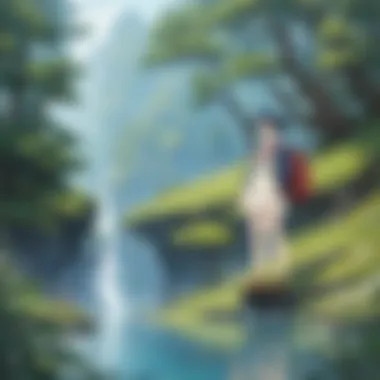
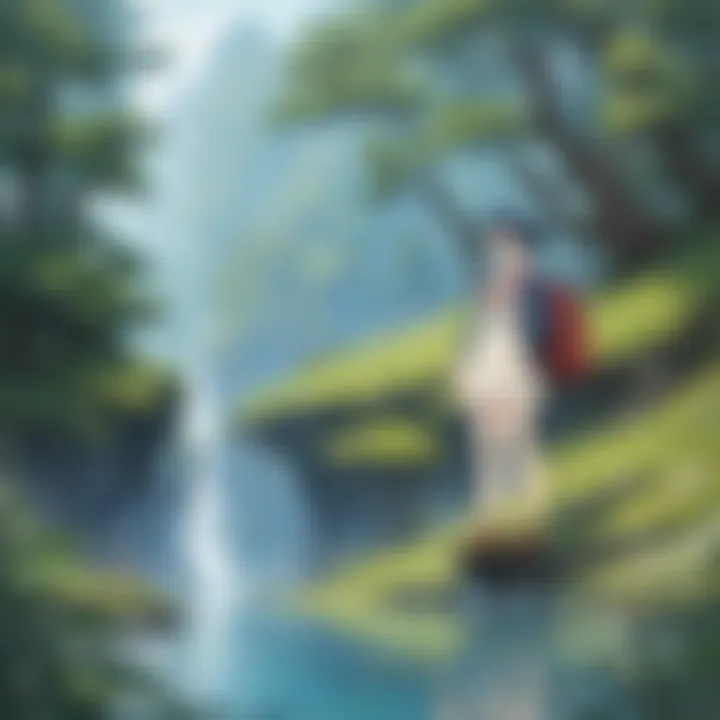
Intro
Hayao Miyazaki stands as one of the most influential figures in cinema, particularly in the realm of animation. His works are not just films; they are profound narratives that captivate audiences with their unique blend of storytelling, artistry, and thematic depth. As we embark on this exploration of Miyazaki's best works, it’s essential to understand the man behind the films and the creativity that defines his style.
This article will delve into the significant aspects of Miyazaki's filmography, analyzing his storytelling techniques, interpreting recurring themes, and recognizing the artistic innovations that set his films apart. By examining each film, we can understand the cultural impacts they have had and gain insight into the character archetypes that frequently appear in his narratives. The goal is to provide both anime enthusiasts and cinephiles with a comprehensive resource that enhances their appreciation for Miyazaki’s contributions to animation and film.
As we move through the body of the article, we will engage in episode reviews, character spotlights, and provide comparisons between anime and manga where applicable. This will culminate in a synthesized view of how Miyazaki has shaped the landscape of modern animation and what his legacy means moving forward.
Prelims to Hayao Miyazaki
Hayao Miyazaki stands as a monumental figure in the landscape of animated cinema. His creative output has shaped and redefined the anime industry, making him a household name not just in Japan, but globally. This article aims to explore his contributions, examining the films that best illustrate his artistic prowess and storytelling skills.
Understanding Miyazaki's work is critical for several reasons. His films are not only visually stunning but also rich in thematic depth, often addressing complex subjects such as environmental conservation, the innocence of childhood, and the nuances of human emotion. An analysis of his filmography presents opportunities for deeper discussions about cultural impacts and resolutions found in his narratives. Furthermore, recognizing distinctive elements in his films allows enthusiasts to appreciate the subtleties of animation as an art form.
Through this exploration, readers will be guided through a structured overview of his background, career beginnings, and the defining characteristics of his films. This foundation is essential for grasping why his work resonates deeply with audiences around the world.
"The creation of animation is very much the same as the process of breathing. You breathe in, and then you breathe out."
This foundation sets the stage for a comprehensive understanding of his artistic journey and the themes that permeate his most acclaimed films.
Background and Early Life
Hayao Miyazaki was born on January 5, 1941, in Tokyo, Japan. He grew up during a tumultuous period in Japan's history, marked by World War II and its aftermath. These early experiences correctly shaped his worldview and influenced many of his narratives, which often reflect the struggles between nature and modernity. The family dynamics he experienced also played a significant role in his development as a storyteller.
Miyazaki showed an interest in drawing from a young age. He was encouraged by his mother, who had a strong appreciation for art. His educational background included studying political science and economics at Gakushuin University. However, his passion for animation led him to join the Toei Animation Company after graduation. This decision marked the beginning of his formal journey in the animation industry.
Career Beginnings
Miyazaki's career in animation began in the early 1960s at Toei Animation. His initial roles included working as an in-between artist and animating scenes for various films, which provided him with valuable experience in the industry. In 1965, he directed his first feature film, "The Great Adventure of Horus, Prince of the Sun." While it did not achieve substantial commercial success, it laid the groundwork for his unique storytelling approach, blending fantasy with social issues.
Miyazaki's passion for his craft, dedication to storytelling, and willingness to explore innovative animation techniques caught the attention of critics and audiences alike. After leaving Toei, he co-founded Studio Ghibli with fellow animator Isao Takahata in 1985. This move not only marked a new chapter in his career but also established a studio that would produce some of the most influential animated films in history.
Miyazaki's early experiences and career choices provided a solid foundation for his later successes, defining the stylistic and thematic contours that would come to characterize his work.
Defining Characteristics of Miyazaki's Films
Hayao Miyazaki’s films represent a unique blend of artistry, storytelling, and emotional depth. Understanding these defining characteristics offers insight into why his works resonate with audiences worldwide. This section explores the fundamental elements that distinguish Miyazaki's films, shedding light on the visual, thematic, and character-driven aspects that contribute to his legacy.
Visual Style and Animation Techniques
Miyazaki's visual style is one of the first things that captures the viewer's attention. From lush landscapes to intricately designed characters, every frame is a work of art. The animation techniques he employs are not just for aesthetics; they serve to amplify the story.
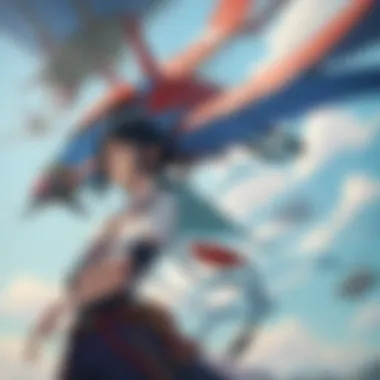
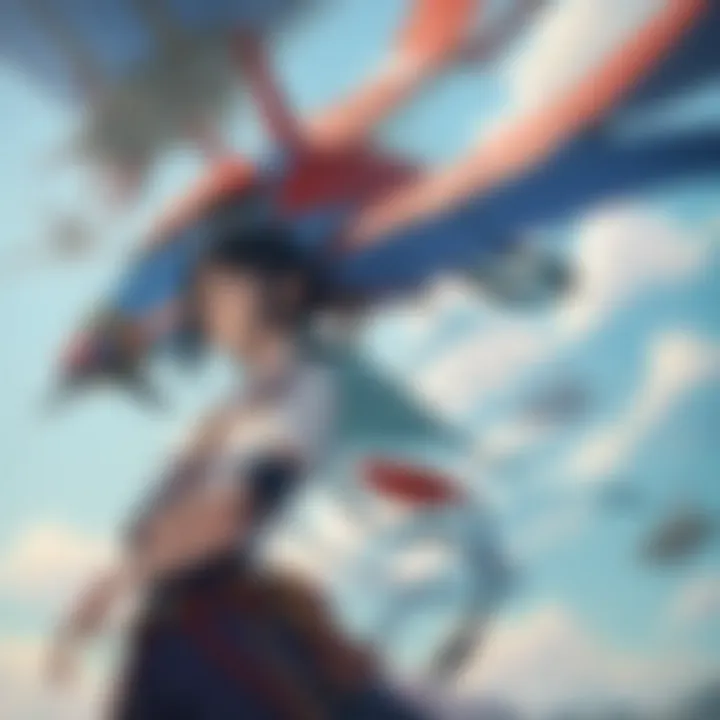
The use of hand-drawn animation contrasts sharply with the digital techniques prevalent today. Each movement is fluid and deliberate, creating a dream-like quality that draws viewers in. Background art, often detailed and vibrant, provides a rich context for the narratives. For instance, in "Spirited Away," the bustling world filled with fantastical creatures reflects the protagonist’s journey through turmoil and growth. The visual arrangement is not merely decoration; it parallels the narrative and enhances emotional stakes.
Miyazaki also employs a soft color palette, which evokes warmth and nostalgia. This choice distinctly influences the viewer’s emotional experience. In short, the visual elements create a gateway for deeper engagement with the story, inviting audiences to experience his unique world.
Themes and Motifs
The themes prevalent in Miyazaki's films are rich and varied, often layered with social and environmental messages. Central to his storytelling is a deep respect for nature and critique of industrialization. Films like "Princess Mononoke" address humanity’s relationship with the environment, encouraging viewers to reflect on ecological issues.
Moreover, themes of courage, friendship, and self-discovery recur throughout his body of work. In "My Neighbor Totoro," for example, the innocence of childhood is celebrated through the bond between siblings and friendly spirits. These recurring motifs appeal to universal experiences, fostering a connection with audiences of all ages.
Miyazaki often imbues his tales with a sense of wonder and magic. By bridging the mundane with the fantastical, he challenges perceptions of reality and fantasy. This intertwining of themes makes his films resonate long after the credits roll.
Character Development
Character development in Miyazaki's films is profound and multidimensional. His protagonists often undergo significant personal journeys. Unlike many traditional narratives where characters might fit into strict archetypes, Miyazaki excels at creating complex individuals with flaws and virtues. These nuanced portrayals encourage empathy and understanding.
For instance, Chihiro in "Spirited Away" begins as a hesitant child but evolves into a brave and resilient figure by the end. Her growth symbolizes a rite of passage that many can relate to, regardless of age. Additionally, supporting characters, even those who initially appear villainous, often reveal depth and humanity. This layered approach adds texture to the storytelling and offers unexpected dimensions.
Moreover, Miyazaki often places female characters at the center of his narratives. These strong, relatable women break traditional gender roles, inspiring viewers with their courage and determination. This focus on character strength is not only refreshing but also reflects broader societal values.
"In Miyazaki's world, protagonists are not born from a perfect lineage but instead shaped by their choices and experiences, inviting viewers to reflect on their own journeys."
Top Films by Hayao Miyazaki
Hayao Miyazaki is arguably one of the most influential directors in animation. His films showcase a blend of stunning visuals, intricate storytelling, and profound themes. Each of Miyazaki's works features a unique narrative depth that resonates with audiences of all ages. In this section, we will explore some of his most noteworthy films, examining the specific elements that contribute to their significance. This exploration not only highlights their artistic merits but also delves into the cultural impacts these films have had globally. Understanding these films is crucial for anyone looking to appreciate the vast landscape of anime and its evolution.
My Neighbor Totoro
Released in 1988, My Neighbor Totoro is a cornerstone of Miyazaki's filmography. The film centers on two sisters who, after moving to the countryside, discover magical creatures including Totoro, a forest spirit. It is a gentle exploration of childhood innocence, nature, and the importance of family. The character of Totoro has become an iconic figure in popular culture, symbolizing comfort and wonder.
Visually, the film employs lush backgrounds and warm color palettes that evoke a sense of peace and connection to nature. The story unfolds leisurely, reflecting the rhythms of rural life. This aspect serves to enhance the themes of exploration and discovery, inviting viewers into a world where magic is seamlessly integrated into everyday life.
Spirited Away
Spirited Away, released in 2001, is perhaps Miyazaki’s most acclaimed work. The film tells the story of a young girl, Chihiro, who inadvertently enters a spirit world. She must navigate this new realm to rescue her parents who have been transformed into pigs. The film's narrative is rich with symbolism and reflects themes of identity, resilience, and the struggles of growing up.
This film is known for its stunning animation and imaginative creature design. Each character embodies unique aspects of human nature, making them memorable and relatable. The film also critiques consumerism and environmental degradation, providing a layered viewing experience. Its universal appeal has won numerous awards, including an Academy Award for Best Animated Feature.
Princess Mononoke
Released in 1997, Princess Mononoke offers a darker, more complex tale. Set in a world where nature and industrialization clash, it follows the journey of Ashitaka, a young prince. He becomes embroiled in a conflict between the forest gods and the humans who seek to destroy them. The film intricately explores themes of ecological preservation, human greed, and the coexistence of nature and civilization.
Miyazaki’s portrayal of strong, nuanced characters sets this film apart. San, the titular Princess Mononoke, is a fierce warrior fighting for the forest. This film does not present a clear hero or villain, prompting viewers to reflect on their own values regarding nature and industry.


Howl's Moving Castle
Howl's Moving Castle, released in 2004, is a visually innovative film based on the novel by Diana Wynne Jones. The story follows Sophie, a young woman transformed into an old woman by a witch's curse. In her quest to regain her youth, she meets the elusive wizard Howl. The film is a narrative on war, love, and self-acceptance.
The moving castle itself serves as a metaphor for Howl’s own struggles with commitment and responsibility. The animation is sophisticated, showcasing a plethora of imaginative designs that enhance the film’s whimsical quality. Its critique of wartime and the consequences of conflict aligns with Miyazaki's recurring themes of anti-war sentiment.
Kiki's Delivery Service
In Kiki’s Delivery Service, released in 1989, we follow a young witch named Kiki who moves to a new town to start her own delivery service. This coming-of-age story emphasizes independence, confidence, and the challenges of growing up. Kiki's journey reflects the importance of community and support.
The film is much lighter in tone compared to others, yet it thoughtfully addresses themes of identity and the process of finding one’s place in the world. The bright animation and charming seaside town setting contribute to the film’s positive energy, making it a staple in Miyazaki’s portfolio.
Nausicaä of the Valley of the Wind
Nausicaä of the Valley of the Wind, released in 1984, is a seminal work that precedes the establishment of Studio Ghibli. The film is set in a post-apocalyptic future where humanity struggles to survive in a polluted world. Nausicaä, the brave princess of the Valley of the Wind, fights to protect both her people and the dying Earth.
This film showcases Miyazaki’s environmental ideals and the spirit of coexistence, as Nausicaä communicates with creatures that others fear. Its profound themes resonate strongly with today’s environmental concerns. The animation is rich and detailed, depicting a world that is both beautiful and fragile.
In summary, these films encapsulate Hayao Miyazaki's genius as a director. Each offers a unique perspective, while all share underlying themes of humanity, nature, and the importance of personal growth. By exploring these films, one can appreciate the depth and complexity found in Miyazaki’s storytelling.
Critical Reception and Cultural Impact
The significance of Hayao Miyazaki's critical reception and cultural impact cannot be understated. His films have reshaped the landscape of animated cinema, bringing forth not only artistic excellence but also deep emotional resonance. This section will explore the accolades his work has garnered, the influence he has had on the broader cinema scene, and the remarkable transformation within the animation industry that echoes his principles and aesthetics.
Awards and Recognition
Miyazaki's films have received a myriad of awards, recognizing their artistic innovation and storytelling depth. Notably, his film Spirited Away won an Academy Award for Best Animated Feature in 2003. This moment marked a significant milestone, as it underscored the global appeal of Japanese animation. The film not only secured commercial success but also carved out a place in cinematic history.
Beyond the Oscars, Miyazaki has been honored with numerous other awards. The Golden Bear at the Berlin International Film Festival was awarded to Spirited Away, highlighting its international acclaim. Additionally, the Venice Film Festival awarded him a special lifetime achievement award for his contributions to the field of animation. Such accolades showcase not only the quality of his work but also its capacity to resonate with diverse audiences.
Miyazaki's film studio, Studio Ghibli, has also been recognized in various ceremonies, contributing to the studio's legacy. The influence of these awards extends beyond mere recognition; they have helped to elevate the standing of anime as a serious form of storytelling in global cinema.
Influence on Cinema
Miyazaki’s works have profoundly influenced filmmakers around the world. His narrative structures and themes prompt a reevaluation of cinematic storytelling. Movies that once relied on established genres now integrate his unique approach to character development and world-building. His impact can be seen in films from various cultures, suggesting a universal value in his storytelling method.
“Miyazaki’s films challenge conventional narratives. They invite viewers into complex worlds that reflect both beauty and melancholy.”
Directors such as Guillermo del Toro and Brad Bird have publicly cited Miyazaki as an inspiration. His ability to blend fantasy and reality encourages filmmakers to explore deeper themes. Audiences now demand richness in plot and character, leading to a cultural shift where substance is valued alongside visual spectacle. This influence is critical for understanding the evolution of animated films today.
Impact on Animation Industry
Miyazaki's influence transcends specific films; it has initiated significant changes within the animation industry itself. His emphasis on hand-drawn animation set a high standard, making a case against the rise of computer-generated imagery. Many animators admire his commitment to traditional techniques, prompting them to invest in quality craftsmanship.
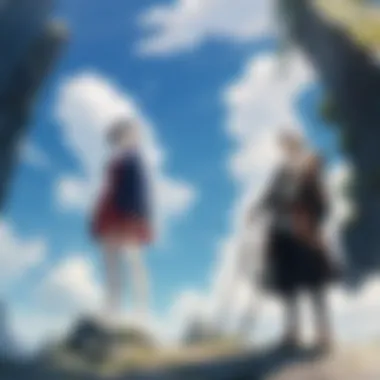
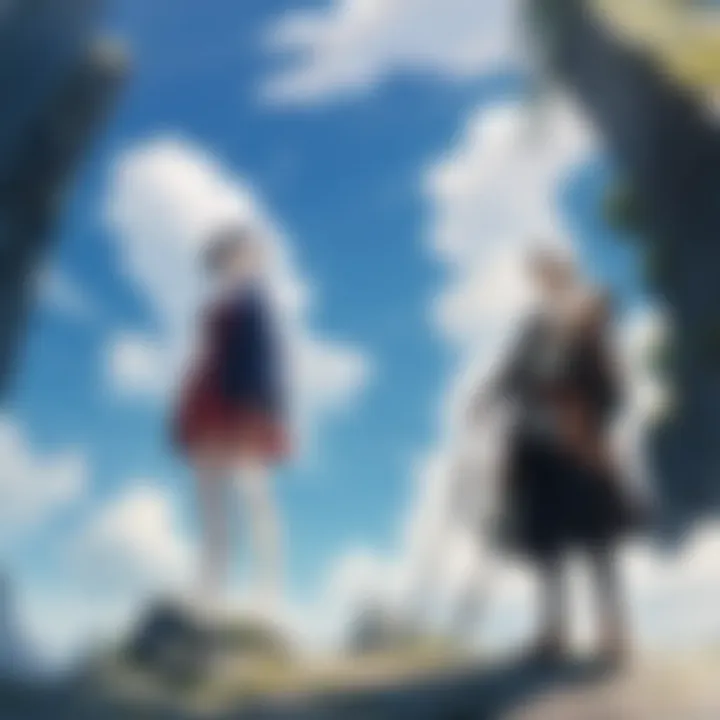
Studio Ghibli's success has inspired new animation studios worldwide. Young filmmakers look to replicate not just his style but his storytelling philosophies. The rise of animated films with heavy thematic elements and intricate narratives can be traced back to Miyazaki’s influence.
In addition, his approach to representation has encouraged a wider variety of characters in animated films, laying the groundwork for future storytellers. The depth of his characters demonstrates the importance of authentic representation, which is increasingly relevant in modern narratives.
In summary, Hayao Miyazaki's critical reception and cultural impact form a vital part of this exploration into his works. His awards validate his cinematic genius, while his influence reshapes current and future storytelling within the industry. Moreover, his legacy continues to inspire and elevate animated cinema to new heights.
Miyazaki's Legacy
Hayao Miyazaki's impact on the world of animation is both profound and enduring. His narrative style and artistic vision transcended cultural boundaries, enabling storytelling that resonates globally. This section focuses on the lasting legacy he has created in the realm of animation, highlighting essential elements that speak to his significant influence.
Above all, Miyazaki established a unique voice in animation that challenged conventions. He mixed fantasy with realistic elements, inviting viewers into worlds that felt both foreign and strangely familiar. His ability to weave complex themes regarding nature, humanity, and morality set a new standard for animated storytelling. The significance here extends beyond mere entertainment; Miyazaki’s films inspire inquiry about the environment and societal structures, prompting deeper reflections among audiences.
Moreover, this legacy is not constrained to his immediate works. It paves pathways for new artists across various media. Those who draw inspiration from Miyazaki often incorporate elements of his storytelling techniques and thematic explorations. In doing so, they contribute to a growing body of cinematic art that respects and continues the conversation he began.
Continuing Influence on New Generations
Miyazaki’s films have a unique ability to capture imaginations across ages. Young viewers often find themselves enchanted by the fantastical elements, while older audiences appreciate the intricate layers of meaning. This dual appeal fosters a new generation of fans who are not just consumers of animation but become inspired creators as well. Through educational settings and various art forms, his influence can be seen permeating into literature, visual arts, and even game design.
Enduring Popularity of His Works
Even after decades, Hayao Miyazaki's films maintain a strong presence in both popular culture and critical recognition. Films such as Spirited Away and My Neighbor Totoro are not only icons for casual viewers but also subjects of study in academic circles. Their enduring popularity can be attributed to the universal themes of family, love, and environmental stewardship—a narrative approach that seems to resonate through time and cultures. Merchandise related to these films continues to thrive, indicating a stable interest that refuses to diminish.
Future of Animation Inspired by Miyazaki
Looking to the future, the impact of Miyazaki’s work is likely to continue shaping the animation industry. Emerging filmmakers and animators see him as a touchstone of quality and creativity. His emphasis on hand-drawn techniques and rich storytelling contrasts with the increasing dominance of CGI. Many new artists aspire to recreate the warmth and emotional depth found in Miyazaki’s films. As they innovate within this framework, they ensure that the essence of Miyazaki's vision influences the next wave of animation.
"Miyazaki’s work is not just seen but felt; it teaches empathy, curiosity, and respect for our world."
Epilogue
In closing, it is vital to understand the far-reaching implications of Hayao Miyazaki's work on both the anime industry and global cinema as a whole. His films, rich in themes of environmentalism, pacifism, and the innocent perspective of childhood, offer much more than mere entertainment. These narratives provide profound insights into the human experience, prompting viewers to reflect on critical societal issues and personal values.
The cultural impact of Miyazaki's films extends well beyond their original audiences. By breaking down boundaries of genre and style, Miyazaki has connected with diverse demographics. His works continue to inspire not only filmmakers but also artists and writers globally.
Additionally, his commitment to high-quality animation and storytelling serves as a benchmark in the industry. Aspiring animators often cite Miyazaki as a primary influence, highlighting the enduring nature of his legacy.
"The most important thing is to enjoy your life—to be happy—it's all that matters."
— Hayao Miyazaki
This article has explored his most acclaimed films, revealing the intricate layers that make them monumental. It is through the examination of these works that one can appreciate not just the artistry involved but also the deeper meanings that resonate with audiences worldwide.
Final Thoughts on Miyazaki's Contributions
Hayao Miyazaki's contributions to animated cinema are unparalleled. His films have pushed the boundaries of storytelling, combining whimsical fantasy with layers of meaning that provoke thought. Each film, from My Neighbor Totoro to Spirited Away, showcases his unique approach to character development and visual storytelling.
The themes he explores such as the struggle against industrialization, the importance of nature, and the complexities of growing up, resonate with viewers of all ages. His portrayal of strong female characters also sets a precedent in animation, influencing how stories can empower and shape young minds.
Furthermore, his emphasis on hand-drawn animation has kept traditional methods alive in an age where digital techniques often dominate. This attention to detail and quality is one of the charms of his films, reminding audiences of the art form's roots.
In summary, Miyazaki's legacy is not just in the films he created but also in the conversations they spark about culture, society, and humanity. His works remain a rich territory for exploration, reflection, and emotional engagement, making continued study of his contributions not only relevant but necessary.







